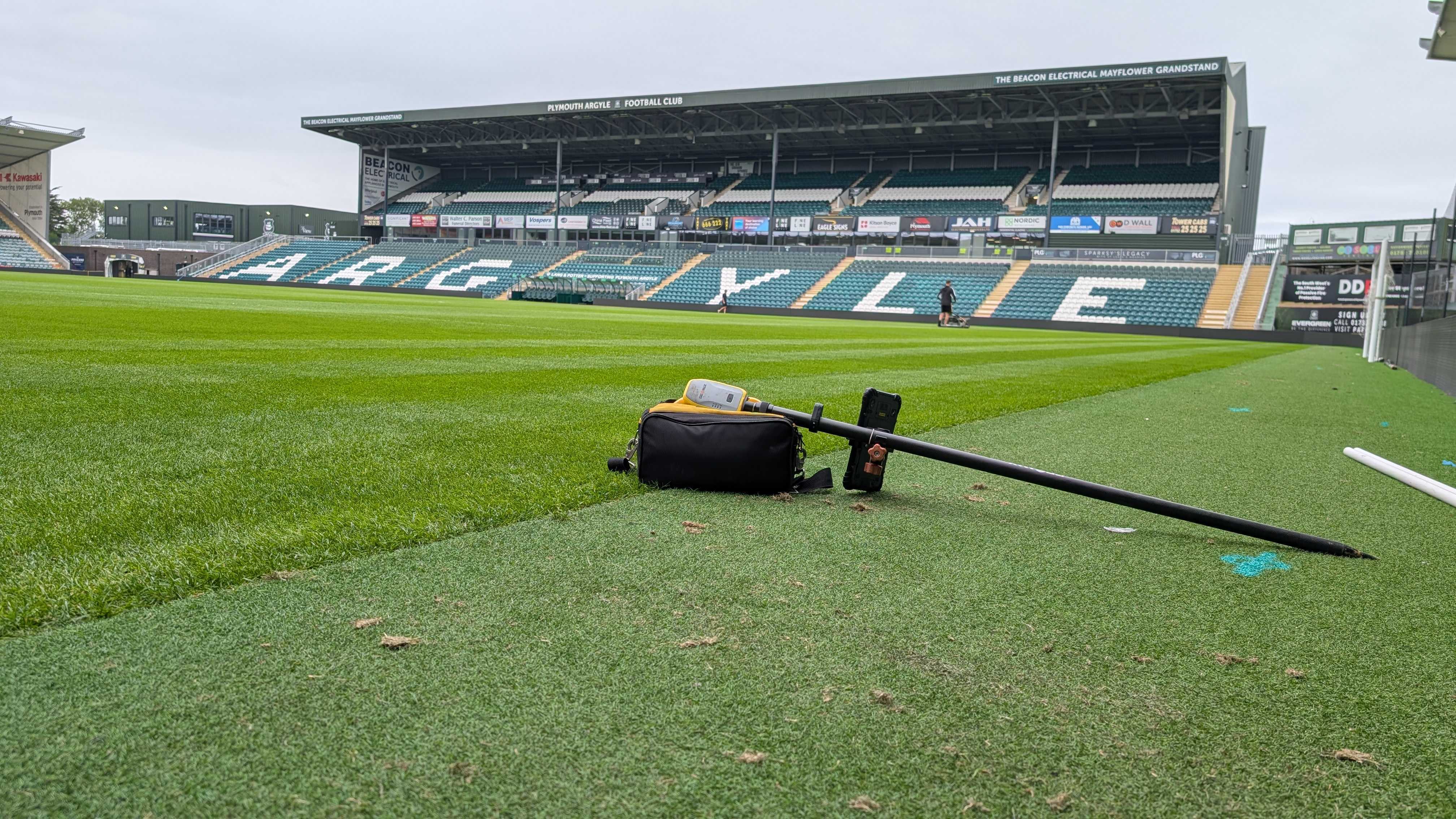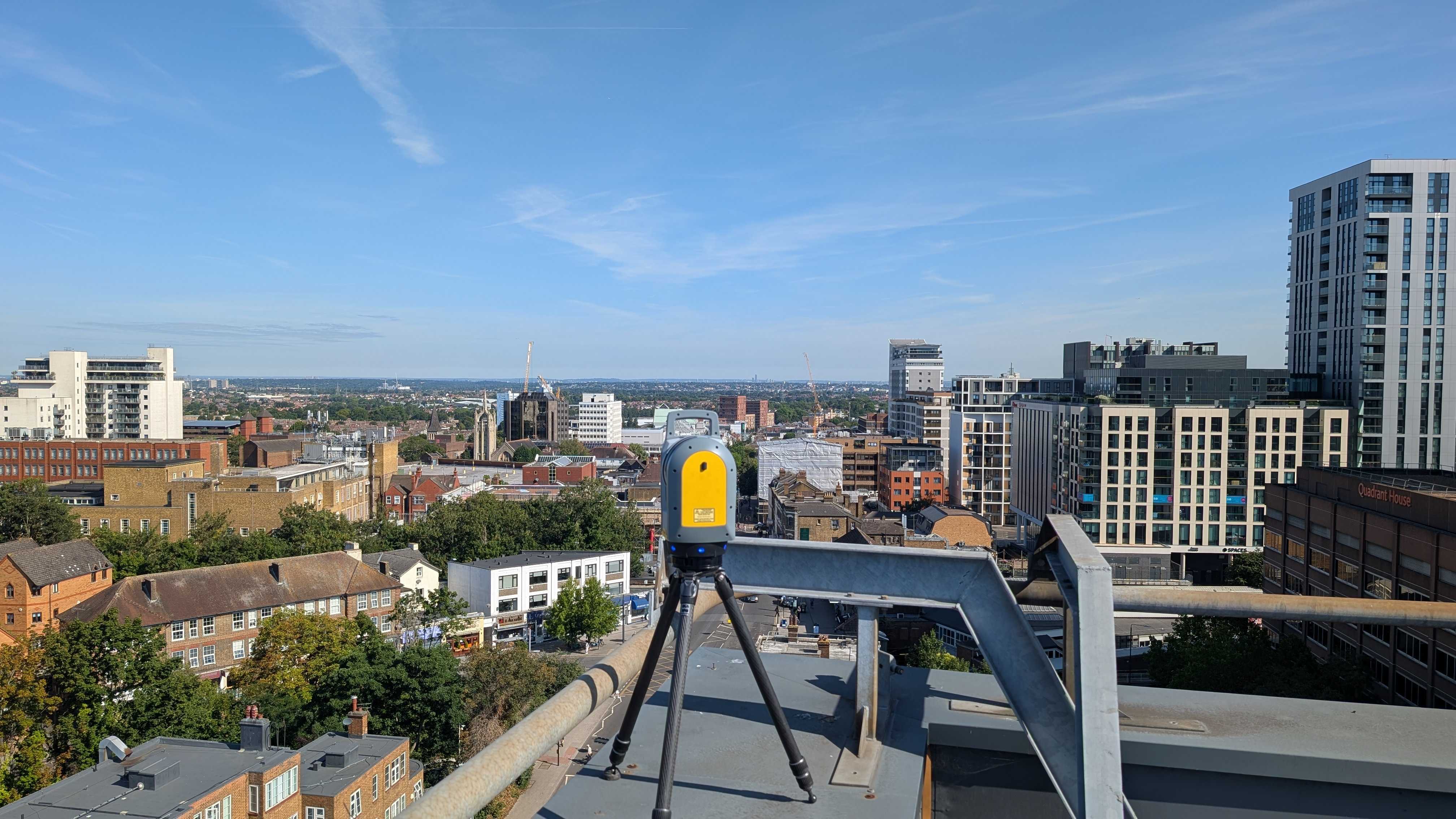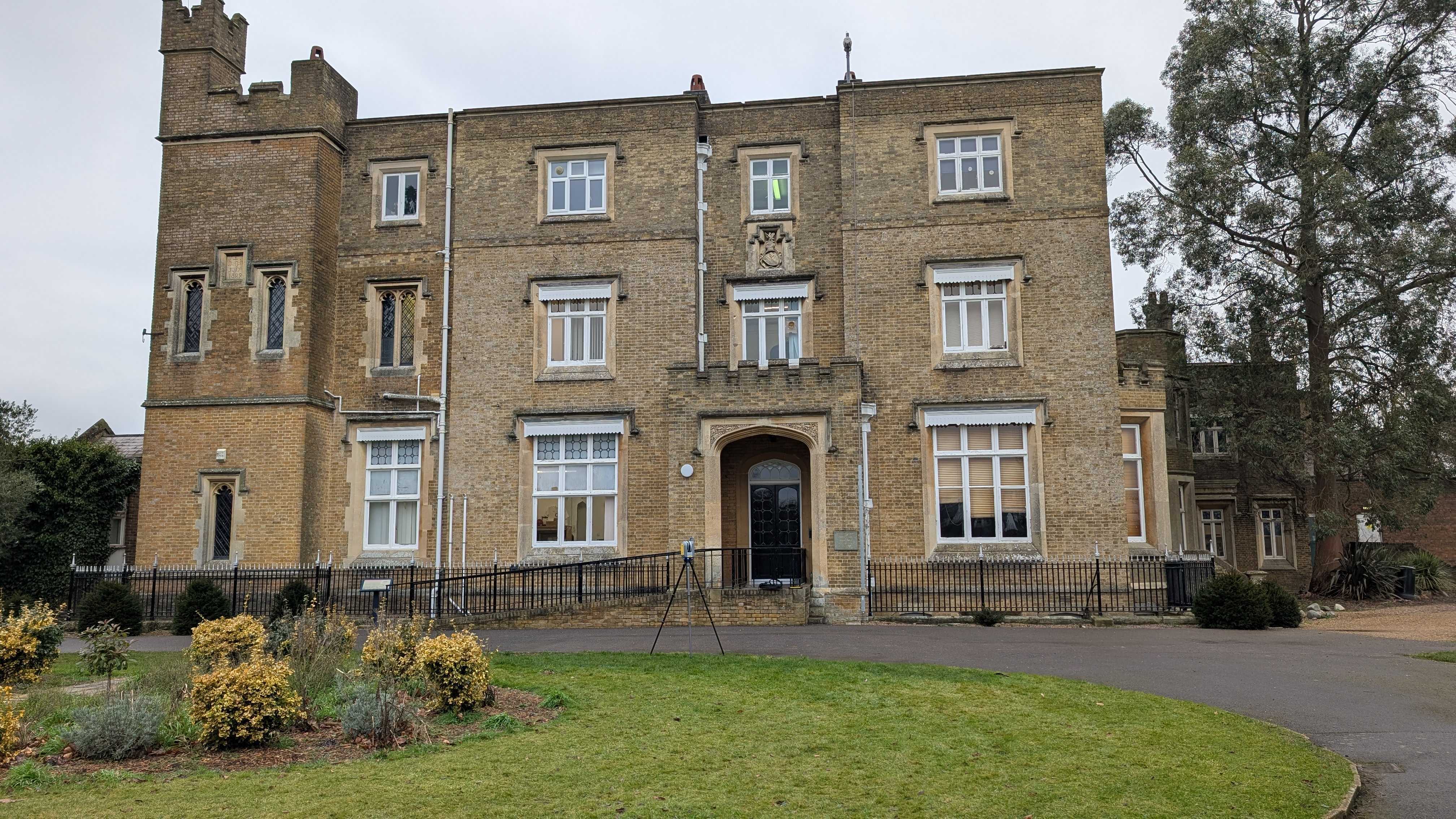Every contractor knows the tension that comes with starting excavation. Beneath every site lies an unpredictable network of utilities, gas lines, water pipes, fibre-optic cables, and damaging even one can cause project delays, health and safety issues, or costly compensation claims.
That’s why precise underground detection is not just a technical requirement but a project-saving necessity. The question most project managers ask is: How reliable is radar technology in finding what’s hidden below?
At Intersect Surveys, our GPR Surveys give clients visibility beneath the surface without breaking ground. This article explains what determines radar accuracy, where it performs best, and how we ensure dependable results across diverse site conditions.
What Is a GPR Survey and How Does It Work in Underground Detection?
A GPR Survey (Ground Penetrating Radar Survey) uses radar pulses to identify changes in the subsurface. The radar unit sends electromagnetic waves into the ground, and when those waves meet an object or material boundary, part of the signal reflects back.
By analysing these reflections, surveyors create detailed profiles of what lies beneath, from buried pipes and ducts to voids or changes in soil composition.
Unlike manual probing or trial trenches, GPR Surveys are entirely non-intrusive. That means no disruption to the surface and no downtime for the site team. The process produces real-time data, giving engineers an immediate understanding of underground layouts before excavation starts.
How Does Ground Penetrating Radar Create a Clear Image of the Subsurface?
Radar imaging works by detecting changes in how underground materials respond to electromagnetic energy. When a radar pulse travels through the soil, its speed and direction change depending on what it passes through. Dense or conductive materials, such as metal pipes or reinforced steel, cause strong reflections because they resist the signal. In contrast, less conductive materials, like PVC, clay, or concrete, create weaker returns that fade more quickly.
In a typical GPR Survey, multiple parallel passes are completed over the same area. Each pass captures reflections from a slightly different angle, allowing the surveyor to build a cross-sectional view of the subsurface. By stacking these slices together, they can produce a three-dimensional model that highlights the depth and continuity of each utility line or structure.
To ensure precision, GPR Surveys are often paired with positional reference systems such as GPS or total stations. This step converts the radar readings into real-world coordinates, creating an accurate map of underground features. The resulting dataset can be imported directly into CAD or BIM platforms, where it becomes part of the project’s digital model.
What Factors Influence the Accuracy of GPR Surveys?
Several variables affect how well radar performs. Understanding them helps teams know what to expect from their results.
How Do Soil Type and Moisture Affect GPR Readings?
Soil composition is one of the biggest influences on radar accuracy. Dry, sandy soils allow deep penetration and clear reflections. Clay or water-saturated soils absorb radar energy, limiting depth and softening the signal.
To counter this, skilled surveyors adjust radar frequency, speed, and signal gain according to on-site conductivity readings. At Intersect Surveys, this calibration process ensures results remain consistent across changing soil conditions.
Why Does Antenna Frequency Change the Level of Detail?
Radar systems use antennas of varying frequencies. High-frequency antennas (900 MHz or above) provide detailed images but only to shallow depths. Low-frequency antennas (200–400 MHz) reach deeper targets but with less fine detail.
Choosing the right antenna is about balance, enough resolution to identify utilities clearly and enough depth to capture everything relevant. Each GPR Survey we deliver matches antenna type to the specific project objective, not a one-size-fits-all setting.
What Role Do Surface Conditions and Interference Play?
Reinforced concrete, rebar, and surrounding metal structures can distort radar signals. Electrical interference from nearby sources can also add noise. Surveyors manage these variables by using consistent grid layouts, cross-scanning at multiple angles, and filtering out interference during post-processing.
Why Does Operator Experience Matter for GPR Accuracy?
Radar equipment is sophisticated, but interpretation is human. Recognising the difference between a genuine reflection and background noise requires training and field experience. The same dataset can tell two very different stories depending on who reads it.
Every GPR Survey from Intersect Surveys is reviewed by qualified analysts with years of site experience. Their insight turns raw radar data into maps engineers can rely on.
How Accurate Can GPR Surveys Be in Real Construction Settings?
In practice, GPR Surveys achieve impressive precision when handled correctly.
What Level of Depth Accuracy Should You Expect?
Under typical UK soil conditions, depth readings from GPR Surveys are accurate within roughly 10–15% of true depth. A utility two metres underground, for example, will appear within 20 to 30 centimetres of its actual level.
Surveyors improve this precision by calibrating radar velocity against known targets, such as test pits or exposed services.
How Precise Is the Horizontal Positioning?
When radar data is geo-referenced with GPS or total station measurements, lateral positioning accuracy typically falls within a few centimetres. This allows detected utilities to be plotted directly on digital site plans with confidence.
Can GPR Identify Material Type Accurately?
Yes, to an extent. Metal utilities create sharp, bright reflections. Non-metallic materials such as plastic or clay pipes produce smoother, lower-amplitude responses. While radar can’t name the material, it provides enough contrast for analysts to classify it correctly in most cases.
When Do GPR Surveys Deliver the Best and Most Reliable Results?
Radar performs best in dry, uniform soils and open sites with minimal interference. Projects that benefit most include:
- Utility mapping before construction or roadworks
- Verification of as-built drawings during redevelopment
- Locating non-metallic assets where electromagnetic locators fail
- Detecting voids or structural anomalies below slabs and pavements
In these conditions, GPR Surveys can detect utilities several metres deep with over 90% reliability.
Where Can GPR Surveys Struggle to Maintain Accuracy?
Performance can vary depending on site conditions, and understanding these limits is key to interpreting results correctly. In heavy clay or saturated soils, radar energy doesn’t travel as far because moisture and minerals absorb electromagnetic waves more quickly. This absorption weakens the returning signal, making deep utilities harder to detect or less sharply defined.
Reinforced concrete poses another challenge. The steel mesh used within slabs and foundations scatters the radar signal, creating overlapping reflections that can obscure smaller features beneath. In urban redevelopment or industrial environments where reinforced structures are common, surveyors must adjust scanning techniques carefully to distinguish between genuine utilities and structural reinforcement.
At Intersect Surveys, our teams anticipate these conditions before scanning begins. We modify antenna frequency, grid spacing, and signal gain to compensate for reduced penetration and reflection strength. Where radar alone cannot provide a complete picture, we incorporate complementary detection methods such as electromagnetic tracing, ground conductivity testing, or selective trial holes to confirm uncertain targets.
What Practices Ensure Consistent Accuracy in Every GPR Survey?
Consistency doesn’t happen by chance. It’s built into the survey process from the start. At Intersect Surveys, we follow a verified workflow:
- Pre-Survey Review: Analyse existing records and site drawings.
- Soil Conductivity Check: Measure conditions to select the best radar settings.
- Calibration Scan: Validate signal behaviour using a known utility.
- Controlled Grid Scanning: Collect overlapping data to confirm repeatability.
- Advanced Processing: Apply software filters and 3D rendering to clarify results.
- Expert Verification: Multiple analysts review final data before issuing reports.
This process ensures every radar dataset is accurate, repeatable, and ready for integration into wider site information models.
What Do the Data and Field Results Tell Us About GPR Accuracy?
Real-world data shows consistent performance improvements as technology evolves:
- Dual-frequency systems can improve image clarity by around 25–30% compared with single-band setups.
- GPR integrated with GPS tagging provides positional accuracy suitable for direct CAD mapping.
- Research across UK infrastructure projects shows radar detection accuracy above 90% under typical soil conditions.
These numbers aren’t estimates; they come from field performance data gathered across hundreds of completed surveys.
How Can Verified GPR Data Reduce Project Risk and Cost?
Accurate subsurface data prevents accidental strikes, delays, and unplanned repairs. The financial value is clear, a single damaged main can cost tens of thousands in repairs and penalties.
Early-stage GPR Surveys allow project teams to plan routes, design foundations, and allocate resources without surprises. They also provide documentation that satisfies insurers and regulators, proving that underground risks were assessed and managed responsibly.
When backed by professional interpretation, GPR Surveys become more than a detection tool, they are a core element of safe, efficient project delivery.
What Should Every Project Manager Remember About GPR Survey Accuracy?
- GPR Surveys deliver reliable depth accuracy within about 10–15% under standard conditions.
- Soil composition and moisture strongly influence radar performance.
- Proper calibration, grid design, and data interpretation are key to dependable results.
- Combining radar with other detection methods maximises certainty.
- Early surveys prevent downtime, safety incidents, and financial loss.
How Can Intersect Surveys Help You Plan with Confidence?
Understanding the ground beneath your project is the foundation of safety and efficiency. GPR Surveys from Intersect Surveys provide verified underground data you can trust. Our team uses advanced radar systems and experienced analysis to deliver clear, actionable results, every time.
Schedule a consultation with Intersect Surveys to discuss your next project and secure the reliable data your team needs before excavation begins.







